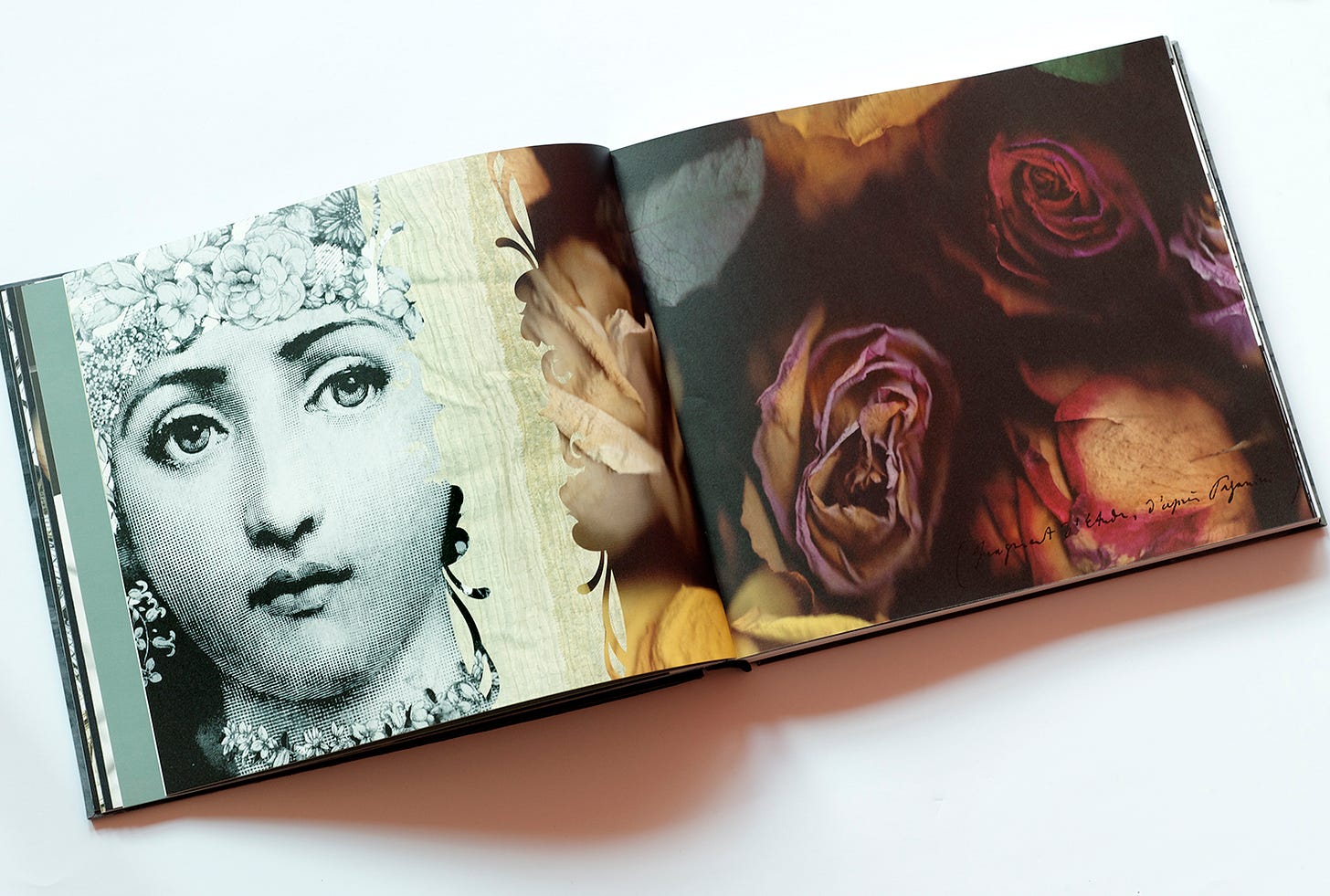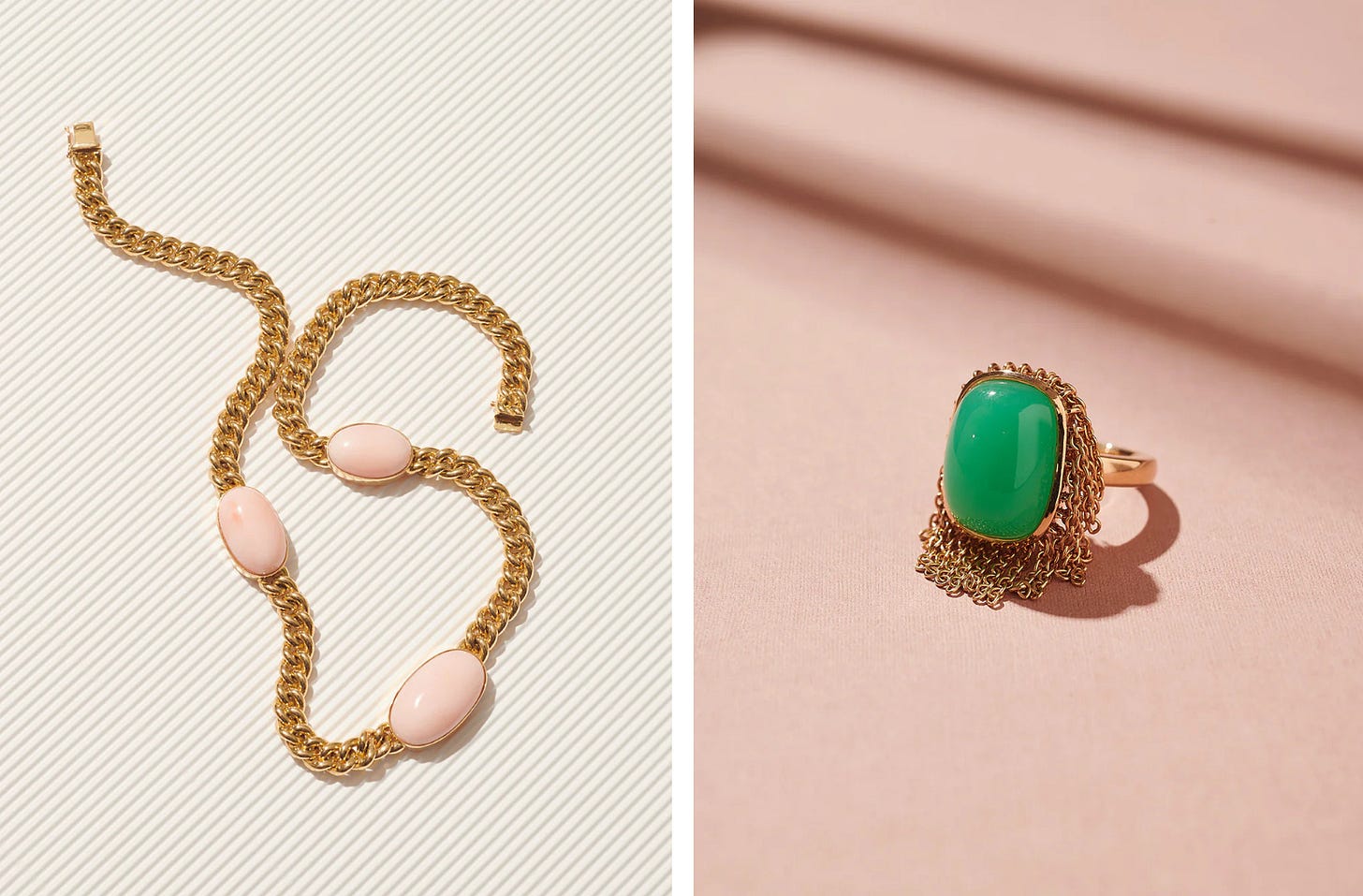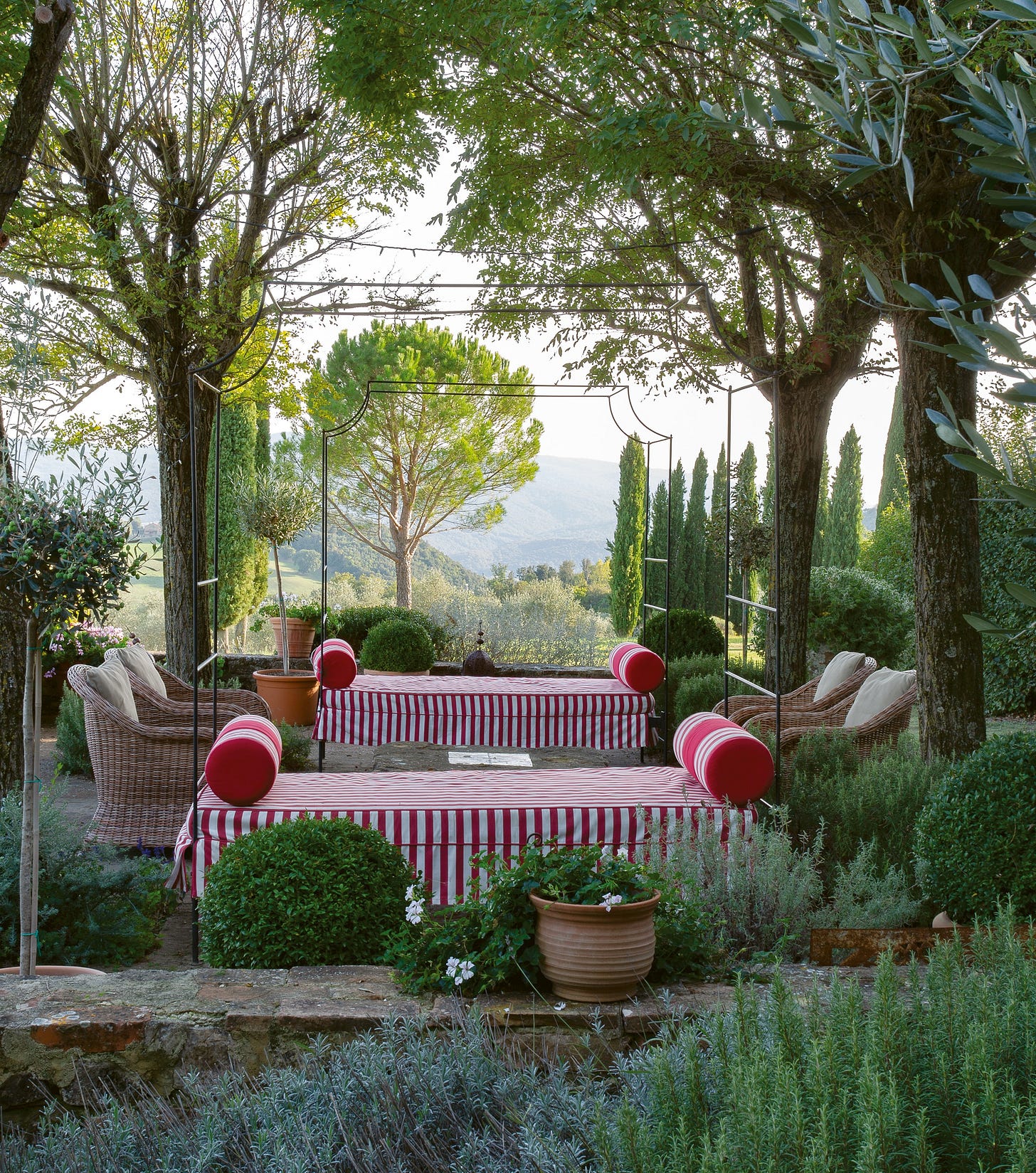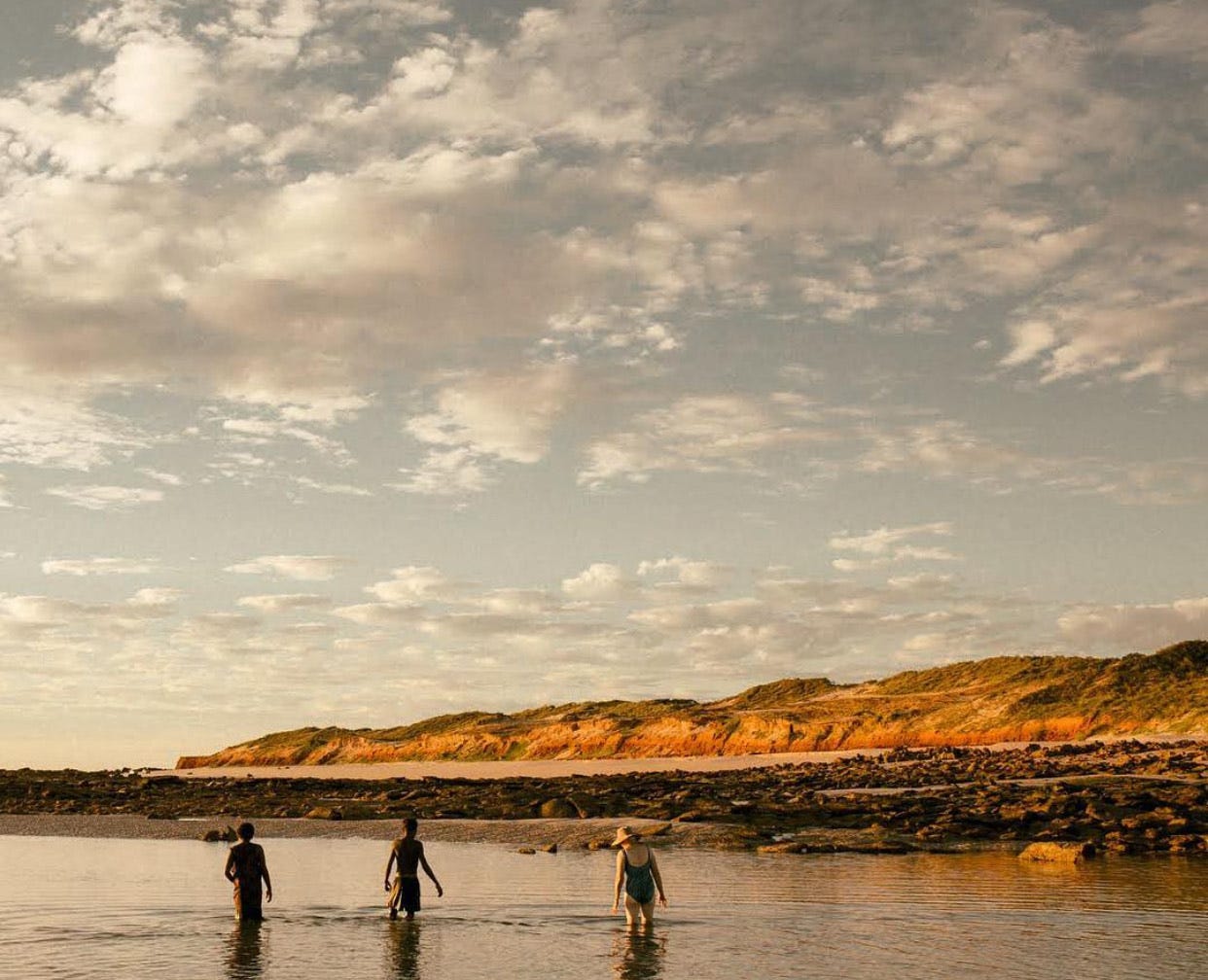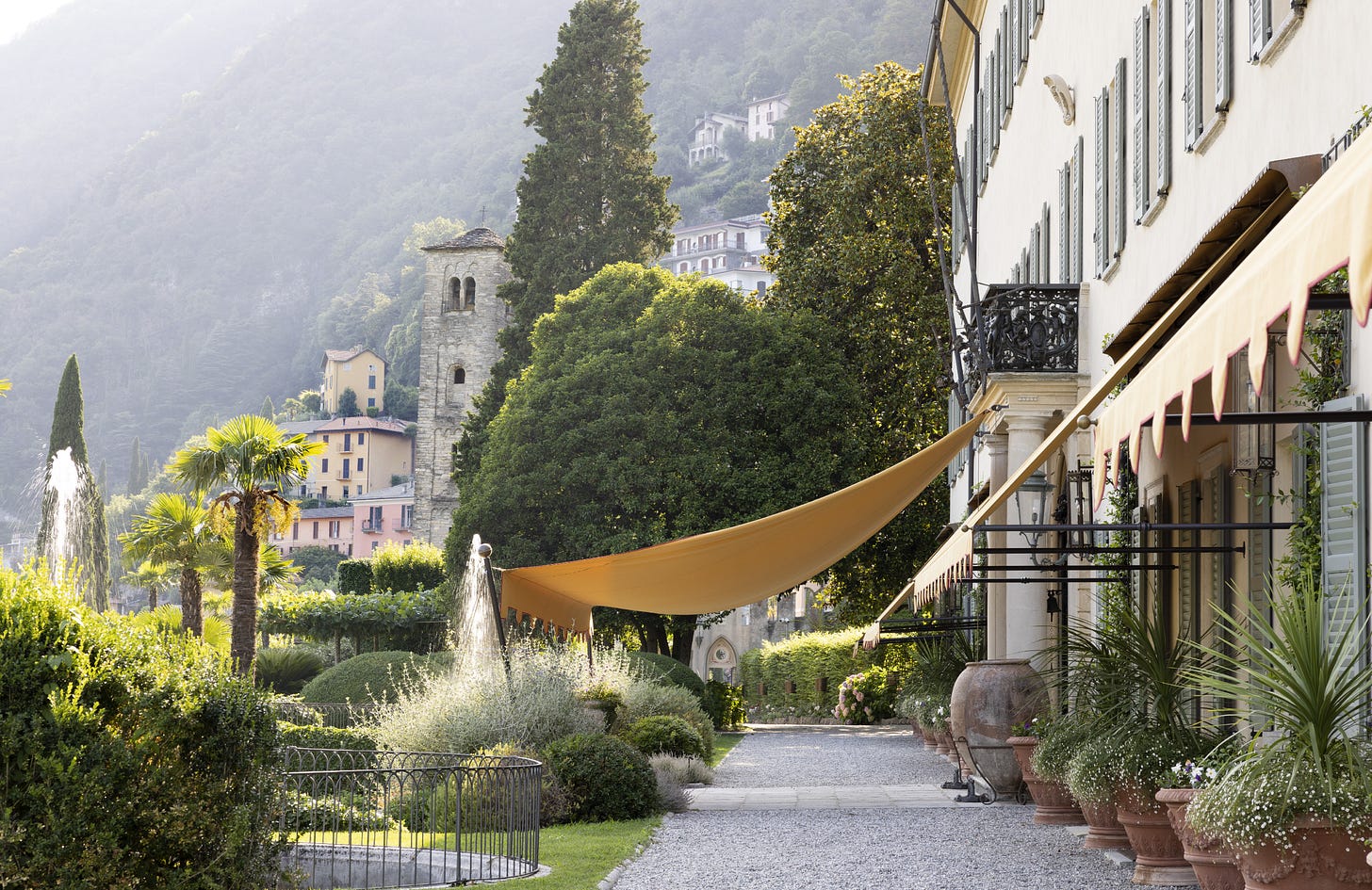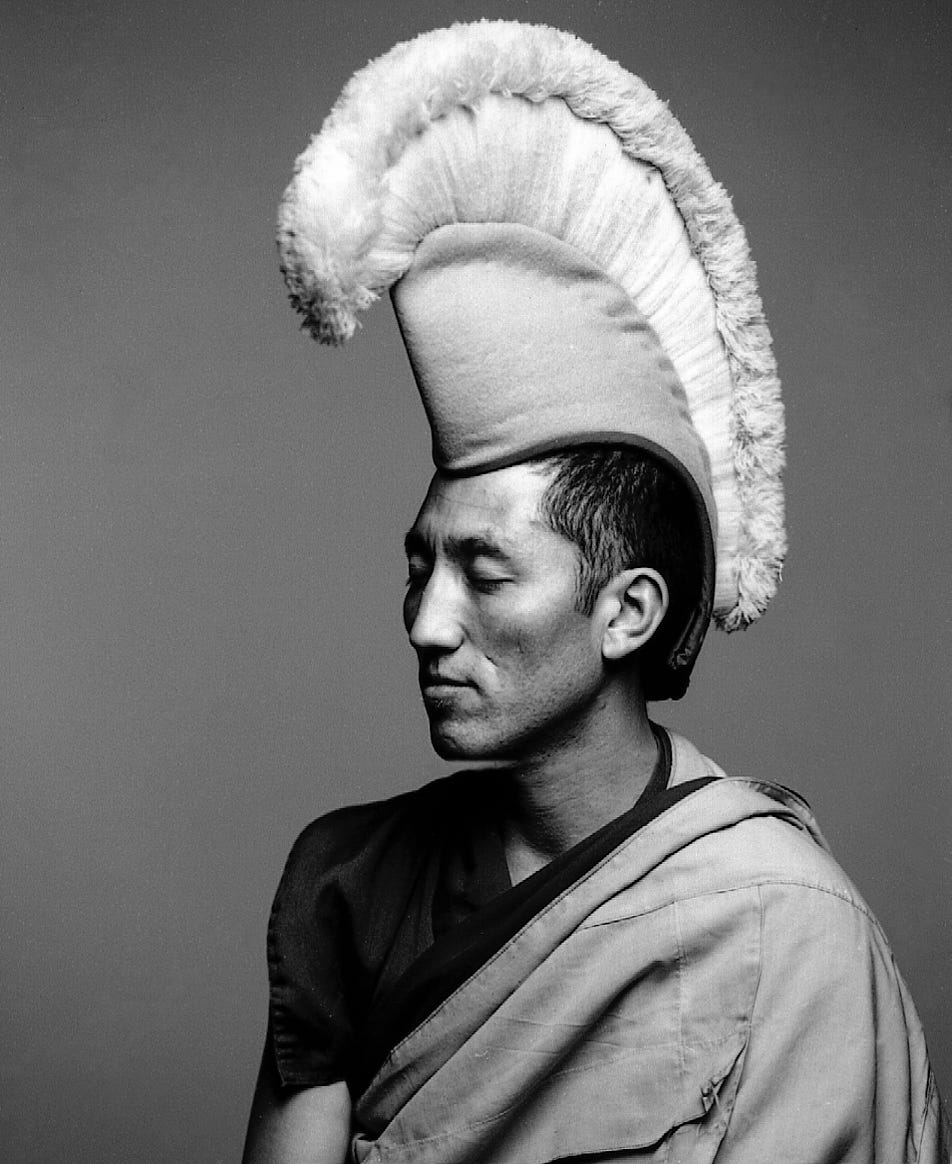Looking at Robyn Lea’s vibrant photographs and reading her vividly written books is like entering a portal to the worlds of the most interesting people and places across the globe. While her lens exposes the emotional ridges and textures of the spaces she captures, her writing peels back the layers of the stories behind them.
In one of my favorite books, Dinner With Jackson Pollock: Recipes, Art & Nature, Robyn shines a light on Pollock’s interests outside of his painting. When one thinks of abstract painter Jackson Pollock, what often comes to mind is a volatile, creative genius and his splatter-filled drip masterpieces. Less likely to come to mind are his little-known culinary gifts for making homemade spaghetti sauce and blueberry blintzes. Robyn illuminates these domestic passions and varied talents and juxtaposes them with his abstract paintings.
While this beauty is currently out of print (you can still snag a gently used one), Robyn has plenty of other gorgeous tomes to explore. Her latest book, This Creative Life: Fashion Designers At Home, features an intimate look at the private spaces where designers live, featuring a diverse range of homes from six countries and thirteen architectural styles.
Robyn’s work casts a lush spell that spans the fields of art, travel, lifestyle, fashion, and food. Her books are perched high on my living room coffee table and displayed proudly. They’re my own private mode of transportation and I love to take a trip inside them.
Q&A
What do you like to explore to capture the inner life and local energy of a city?
For me it’s a sensory immersion: music (mostly classical, especially when seated in an ancient, velvet-lined theatre box), cuisine (made with love), interiors (eclectic, patterned, colorful, natural fibers), and scent. I’m acutely sensitive to interior environments, which can be both a rose and a thorn.
Your photos are rich with texture, color, and shape. When you are writing a new book, how do you choose which photos to put side by side when laying out the page?
For me, pagination is very instinctive and easy. I see stories or books like films, where you need to set the scene and then zoom in on tiny, magical details.
In my new book — This Creative Life: Fashion Designers at Home — I was as enamored with the heady vibrancy of Lucinda Chambers’ home as I was by the pared-back, mid-century rooms inside Bella Freud’s London warehouse conversion.
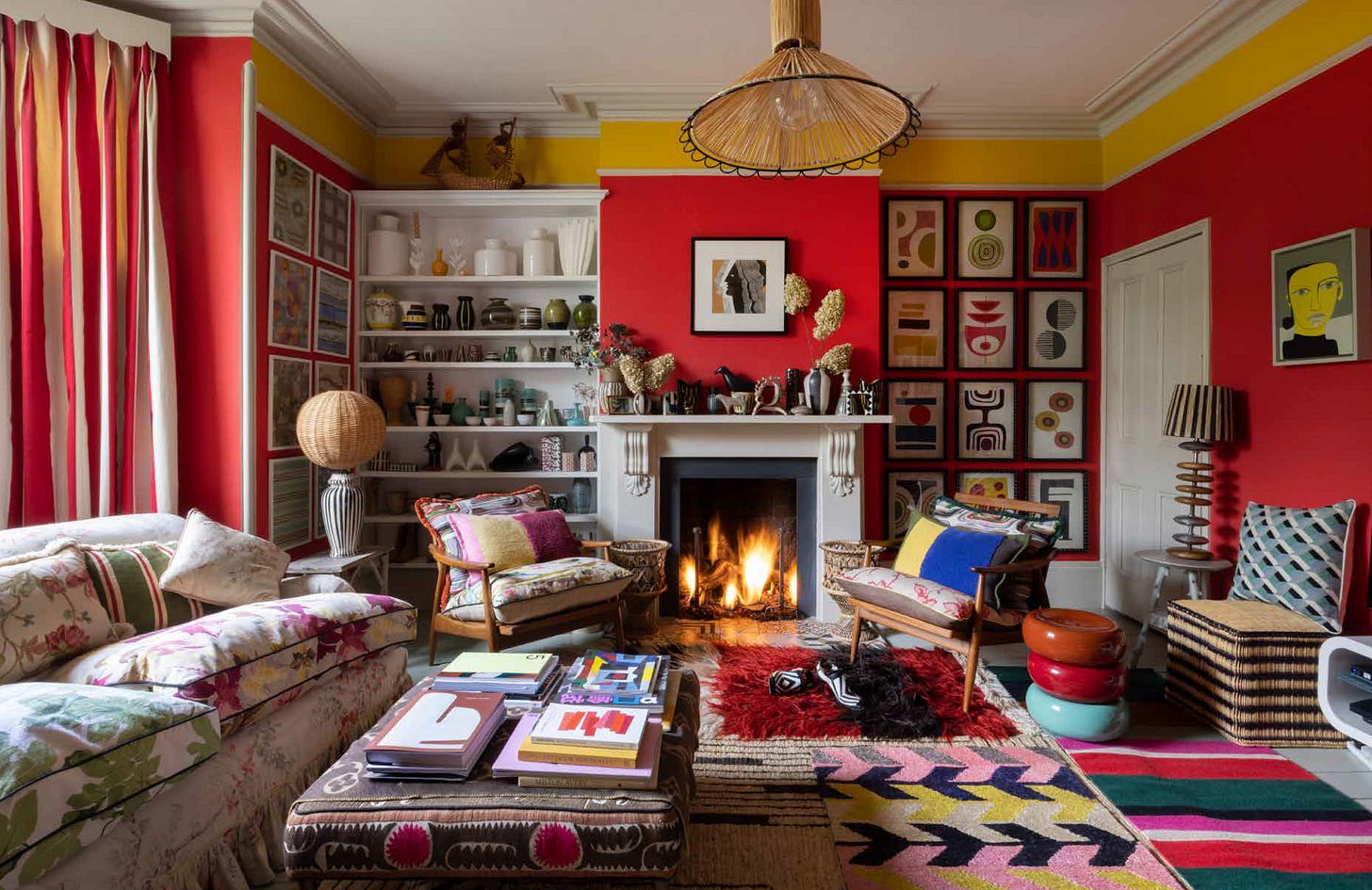
What place or destination has changed the way you think about design, culture, or art and why?
Laudomia Pucci’s home in Florence further deepened my belief that great interiors require a fearless approach.
Born in the heart of Florence in 1961, Laudomia Pucci was raised — like many thousands of Florentines before her — living above her father’s workshop. What made her experience different from the offspring of most Italian artisans was that the workspace and home were located inside Palazzo Pucci, which her aristocratic ancestors built during the Renaissance. Also, her father, Emilio Pucci, the Marquis of Barsento, was one of the most famous fashion designers of the 20th century and one of the founders of the ‘Made in Italy’ movement.
She is not handcuffed by the history of her family but instead has taken the palazzo and the Pucci brand into the 21st century with utter joy and gusto.
How did living in Milan during your formative years shape your creative perspective?
Arriving in Milan as an 18-year-old to assist a photographer was a shock as I had very romantic views of what life would be like for me in a Northern Italian city. I was essentially a country girl with little travel experience, and suddenly I was on my own in a decidedly unfriendly city.
Despite that, I felt utter exhilaration when I was able to access the inner creative heart of the city. It was a process that took a great deal of time to pry open firmly locked doors. Eventually, the glowing inner spirit of the city revealed herself, which led to one of my first books: Milan: Discovering Food, Fashion and Family in a Private City.
Who are your favorite emerging or under-the-radar designers, artists, photographers, or chefs? Why are you obsessed with them?
I’m obsessed with Rovi Lucca, a gentleman’s garden-wear brand that grew out of the founder’s obsession with the architecture and gardens of Lucca, Italy.
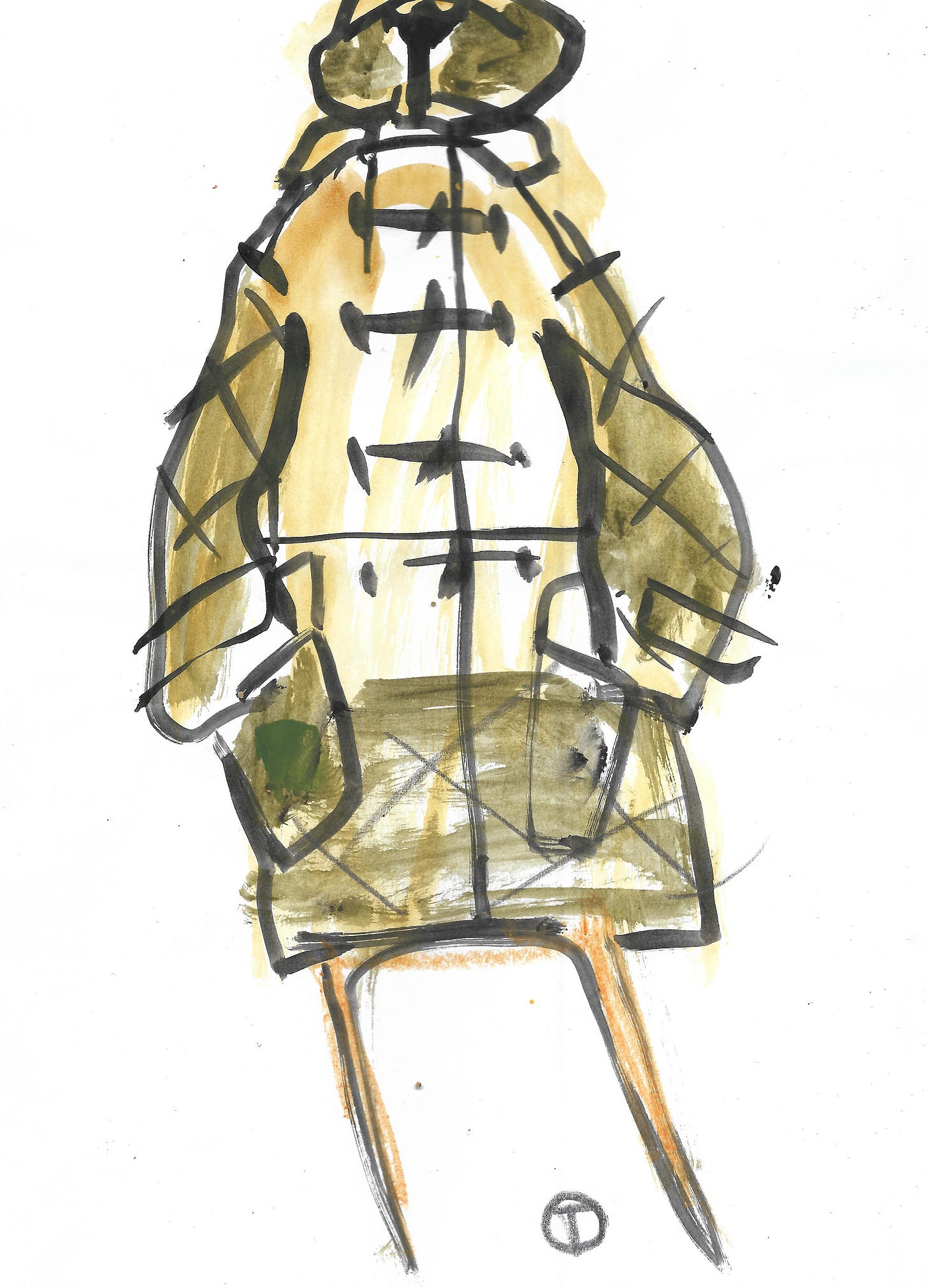
Martin Grant is another designer who has a purity of aesthetic that few can rival. He was raised in Australia and lives and works in Paris. His superb designs are stocked at the hidden gem Christine on Collins.

Also stocked in Christine’s store are hats by the wildly talented Tamasine Dale. She was also raised in a small rural town in Australia and rose to the top of her game. However, she’s intensely modest and not the person to blow her own hornpipe!
Sophie Keegan’s jewelry brand is also a fave.
And while J.J. Martin of La DoubleJ is no longer considered under the radar, I’m captivated by the spirit, love, and wild fun she brings to her fashion and homeware lines. Her apartment in Milan is on the cover of one of my books: A Room of Her Own: Inside the Homes and Lives of Creative Women.

When it comes to food, I have a special affection for the recipes of Amber Guinness, who I did a book project with: A House Party in Tuscany. Her recipes are easy, accessible, and super delicious, especially the artichoke pie!
Claire Basler is one of my favorite artists in the world. Her work — which is inspired by the natural world — is evocative, poetic, and alive with symbolism. She’s flown around the world by clients who are obsessed with her work, and she paints murals on their walls, restaurants, and exquisite hotels.
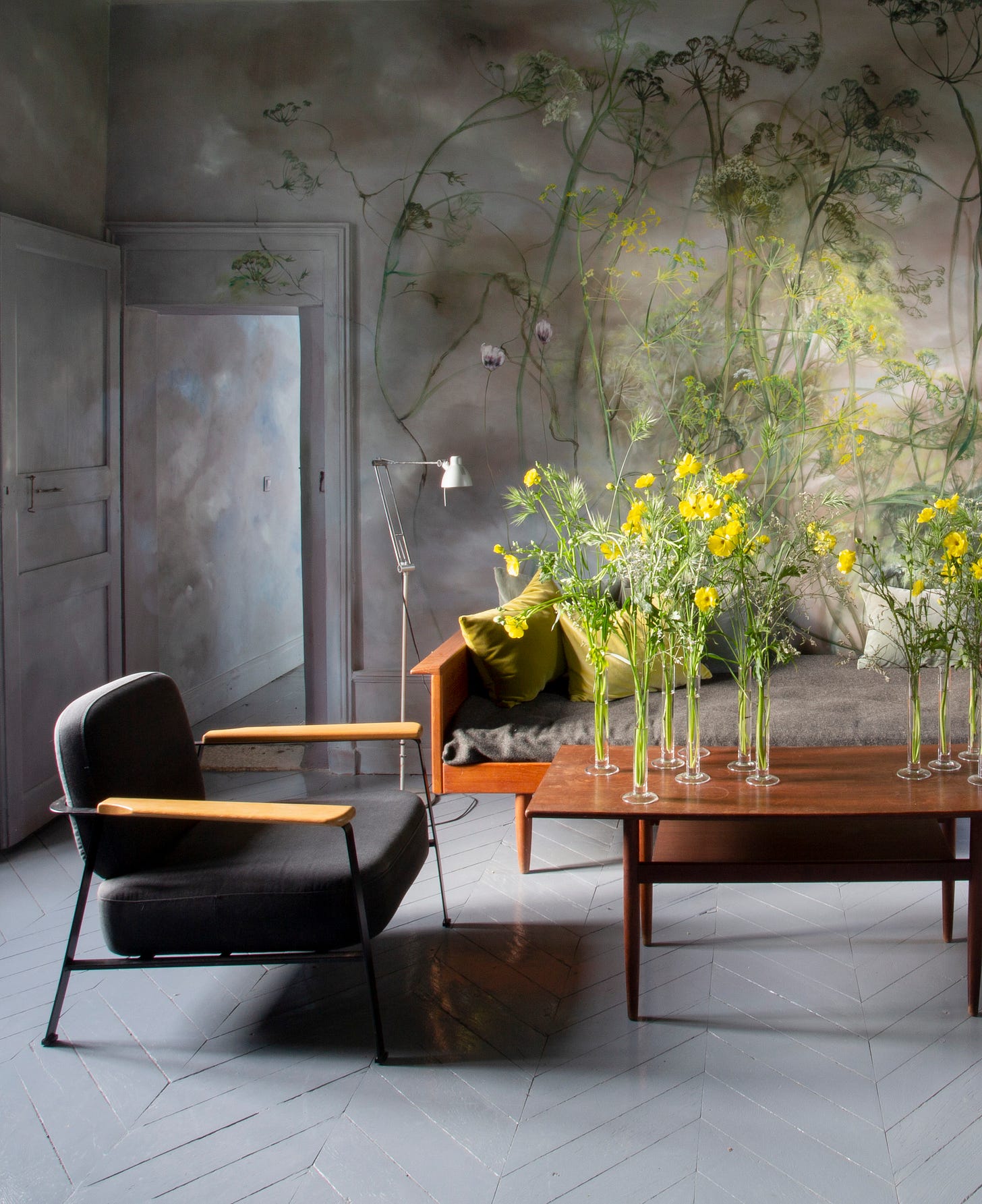
Photographer Jo Yeldham is one of those women with such sensitivity in her work. It brims with emotion and tells stories of connection and yet she’s still underappreciated.
Jo’s husband Joshua is one of Australia’s most important mid-career artists. It’s hard to buy one of his paintings unless you are quick. He’s an artistic genius bringing important stories to the world through his epic works.
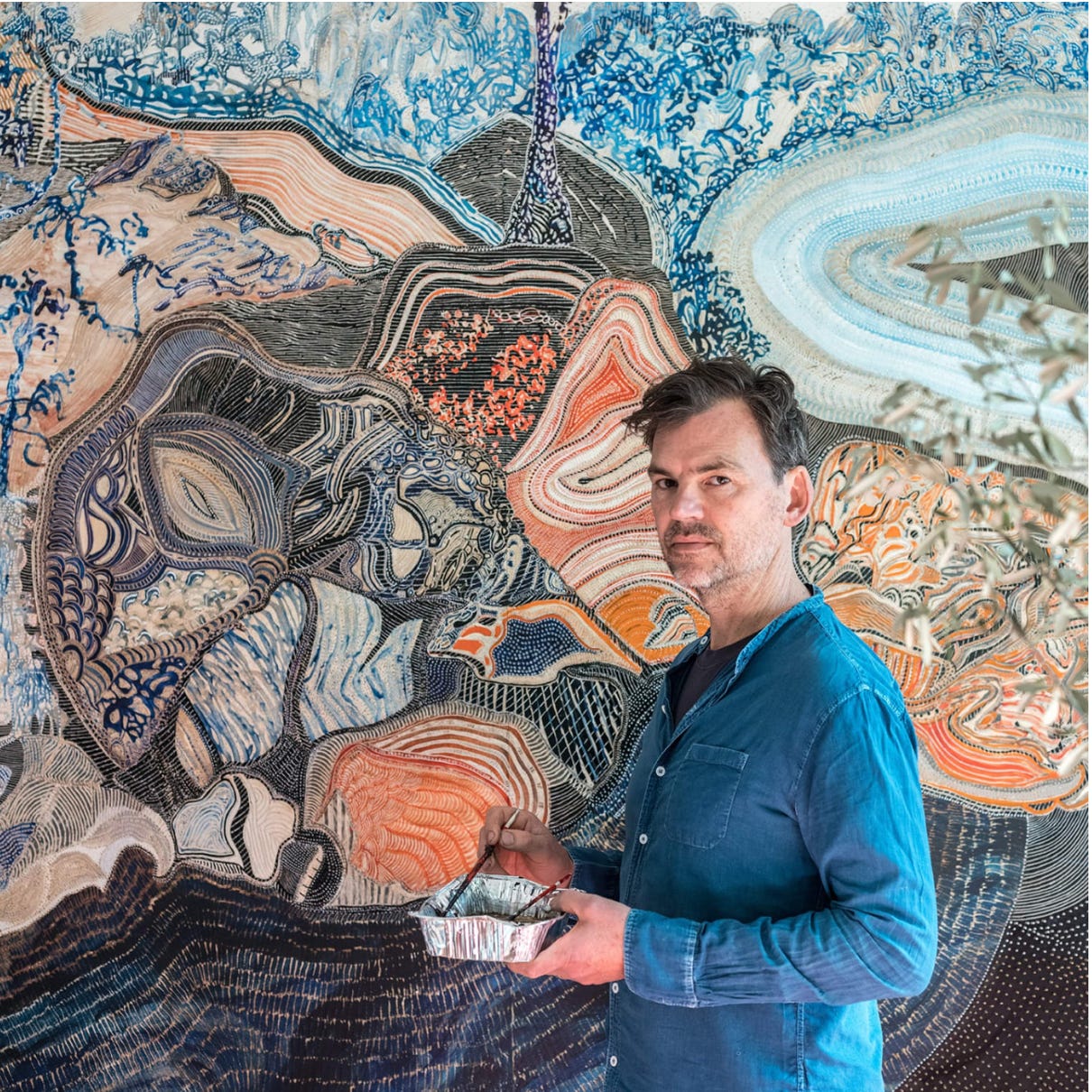
What fuels your creativity within or outside of your professional world?
I need to create or I get depressed. It is as simple as that. It’s a good alternative to an antidepressant!
I fuel it by listening to music — like Vivaldi’s piano variations or Bach’s cello concertos — or allowing my mind to wander under a long hot shower, speaking to other artists and creators and bouncing ideas around, or just by doing the work. Working on a creative project builds energy and momentum, and that drives me forward.
What is your idea of perfect hospitality in any service industry?
Perfect hospitality requires the host to have a genuine desire to care for the person before them.
J.J. Martin talked about Valentina De Santis in this way when describing why Passalacqua on Lake Como was her preferred home-away-from-home. She said that Valentina looks after everyone as though they are family. That’s probably a big part of why her boutique hotel has been voted the best in the world.
What is a cultural experience that had a profound impact on you?
Working with the Tibetan Government-in-exile in India at the base of the Himalayas. I photographed Tibetan monks, nuns, and refugees, many of whom had fled across some of the most inhospitable mountain terrain in the world to find safety in India. The project culminated in an exhibition at Parliament House in Melbourne.
What is the most authentic or unusual hotel you’ve stayed in and why?
The most authentic hotel I have stayed in was the Ritz Paris, where I was based while shooting a book for them: Eternally Ritz. The stories and history form the basis of every experience I had there. I found myself crying over my dinner while listening to the pianist play Chopin’s etudes — I knew I was hooked. The food, service, and music were so moving that I felt all my senses were alive. Hopefully, they will do another book soon and I will go back!
What are the most inspiring places you have traveled to, for work or vacation?
I did a story on the palaces of Rajasthan for Vogue Entertaining & Travel, which was extraordinary. Then I shot the books Château Life and Venetian Chic. Projects like these allow me to dive into the heart of a subject and explore like a local, even if for just a week or ten days.
Most recently I was shooting another project in Venice and stayed with my special friends Mimi and Johnny Todhunter, whose home on the Grand Canal is like a dreamscape.
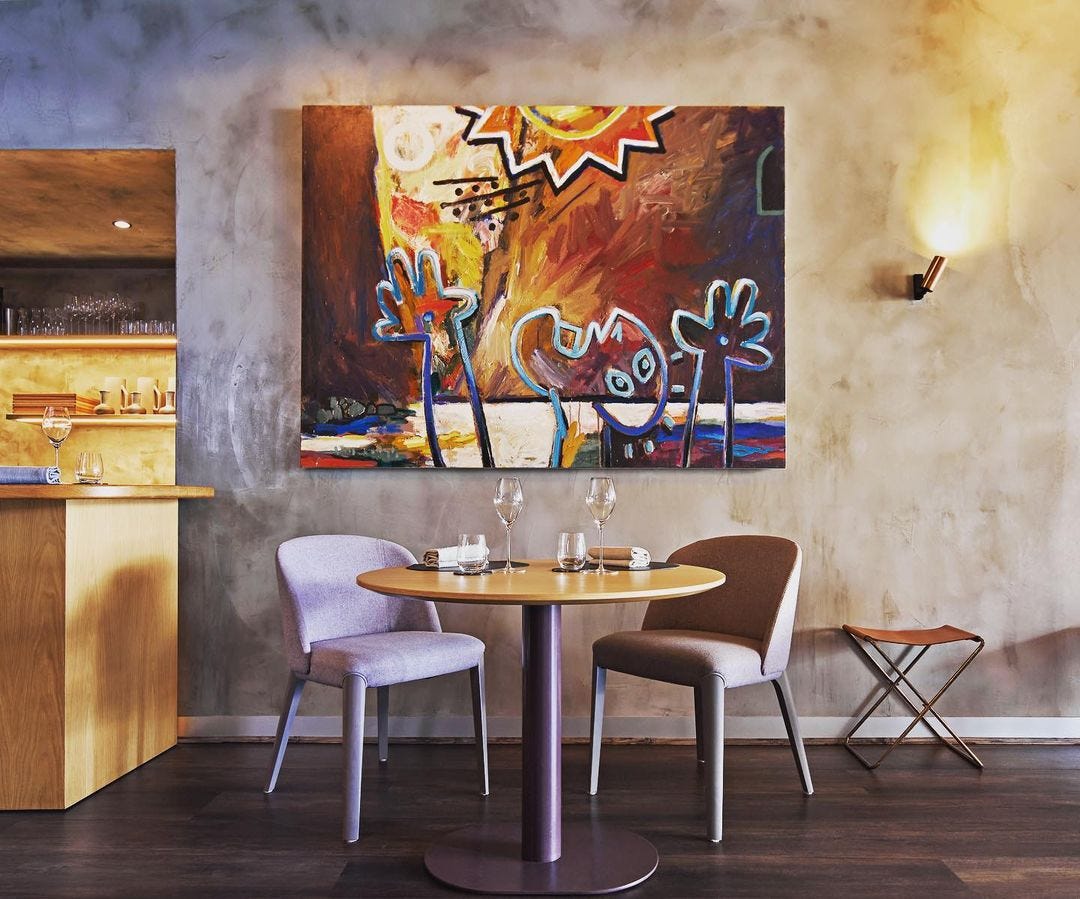
Who are the women you admire most?
The woman who had the most influence on my creative development was the late Sara Benn. She was my mentor, mother figure, and muse. Sara died in 2018, at age 83, and despite being a visionary poet, playwright, and performer, her work has never been published.
I met Sara when I was about six years old and we’d moved to the small city of Ballarat in Australia from the Western District. Sara and her husband John didn’t have children, and Sara took me and my three sisters under her wing.
Their house was like nothing else in Ballarat: John’s screen prints covered the floors, and his mural paintings depicting scenes of Venice covered the walls of their sitting room. Sara’s collection of textiles, Russian icons, decorated eggs, porcelain dolls, and ceramics were set up like still-life studies in every room.
I am a huge fan of Julia Gillard, one of Australia’s former prime ministers. And I am also a great fan of Kamala Harris and Hillary Clinton.
What is your favorite charity or cause?
I volunteer for the NGVWA (National Gallery of Victoria Women’s Association), a fundraising arm for art acquisitions at the National Gallery of Victoria and travel scholarships for art curators. We host the most fabulous events to raise money, including an annual Garden Day.
What are a few pieces in your closet that you cannot live without?
I love my La DoubleJ silk dress and a Dries Van Noten faux fur-trimmed gilet.
I also love a series of one-off, handmade pieces by local creator Camilla d’Antoine. She doesn’t advertise her fashion label so it’s difficult to get her special pieces. Her Instagram reflects her many talents across multiple creative areas.
What is the best career or personal advice you ever received?
When I was in year 11, my favorite photography teacher, Miss Delahunty, left the school — just when I felt like I needed her most for year 12. While devastated, I forged ahead with little guidance from her replacement and got into the photography degree at RMIT.
On the first day, we were told that 3000 students had applied, 30 were accepted, and only 15 of us were likely to graduate. When that day came, more than half the graduates were female. But ten years later only a few of us had survived the challenges thrown in our paths to forge careers as professional photographers.
Sadly, some of the women who dropped away were the most talented students among us. Their confidence had been slowly eroded in the male-dominated field rife with boys-club banter. I often found there was an insinuation that I would never understand the technical requirements needed to be a professional photographer.
Then there were the other subtle forms of discrimination. One of the best photographers in Australia, for example, had a policy of not employing female assistants, as he felt they were not strong enough to carry his heavy bags of equipment. He’d clearly never challenged me to an arm wrestle! Putting aside his discriminatory views, however, I asked him to be my official mentor — and ended up learning more from him than I did in my three-year degree.
I mention all of this because, if I had taken some of the advice offered to me at the time, I would not have become a photographer. As a creative person, you need to do the work to understand yourself well and then make decisions that come from a grounded place of fierce determination.
When available, i/Edit uses affiliate links — if you purchase something linked in our newsletter, we may receive a commission to help fund our continued work! Rest assured, all product recommendations still come straight from our i/Editors and are not driven by sponsors.





